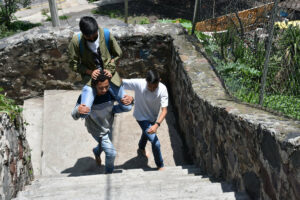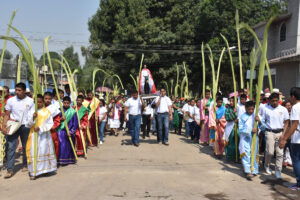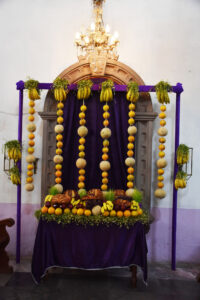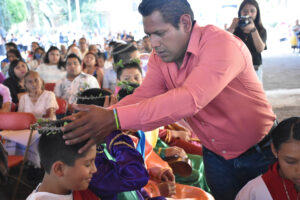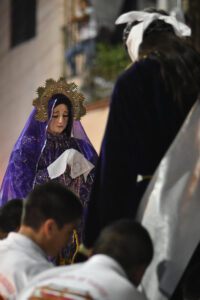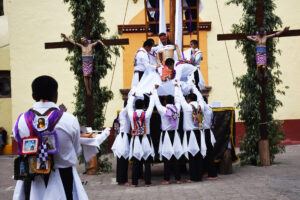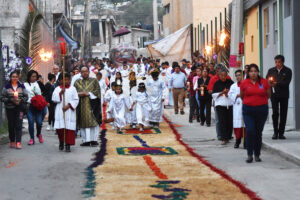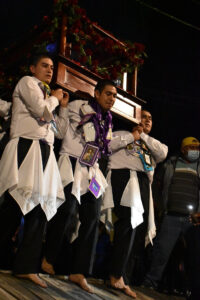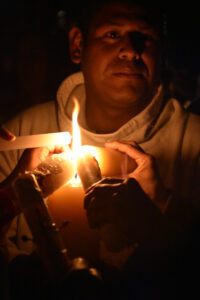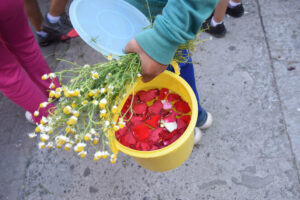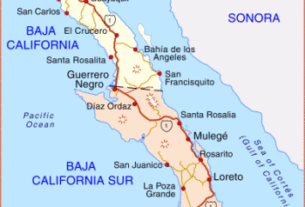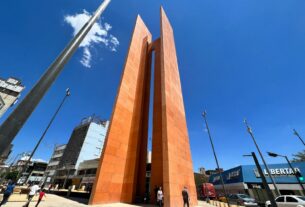Joseph Sorrentino
Like virtually every pueblo in Mexico, residents of San Gregorio Atlapulco (in Xochimilco, Mexico City) celebrate Semana Santa (Holy Week) with processions, extra masses and a depiction of Christ’s crucifixion. But one thing sets San Gregorio apart from other pueblos: Holy Week is run by fourteen young men known as Los Varones. There’s no group like it anywhere else in the world.
Los Varones means “young men,” but here it has the deeper connotation of someone who is chaste and serious. There’s very little written about the the group’s origins, but there is some oral history. “The Franciscans arrived in San Gregorio in the late sixteenth century and they were really the first Varones,” said Arturo Carrasco, an ex-Varón. “Probably in the early seventeenth century, they started using young men from the pueblo.”
Members of the group dedicate a year or more to serving the Catholic Church. This includes cleaning the church atrium, caring for religious statues and helping with a variety of community and church functions. But their main work is during Holy Week.
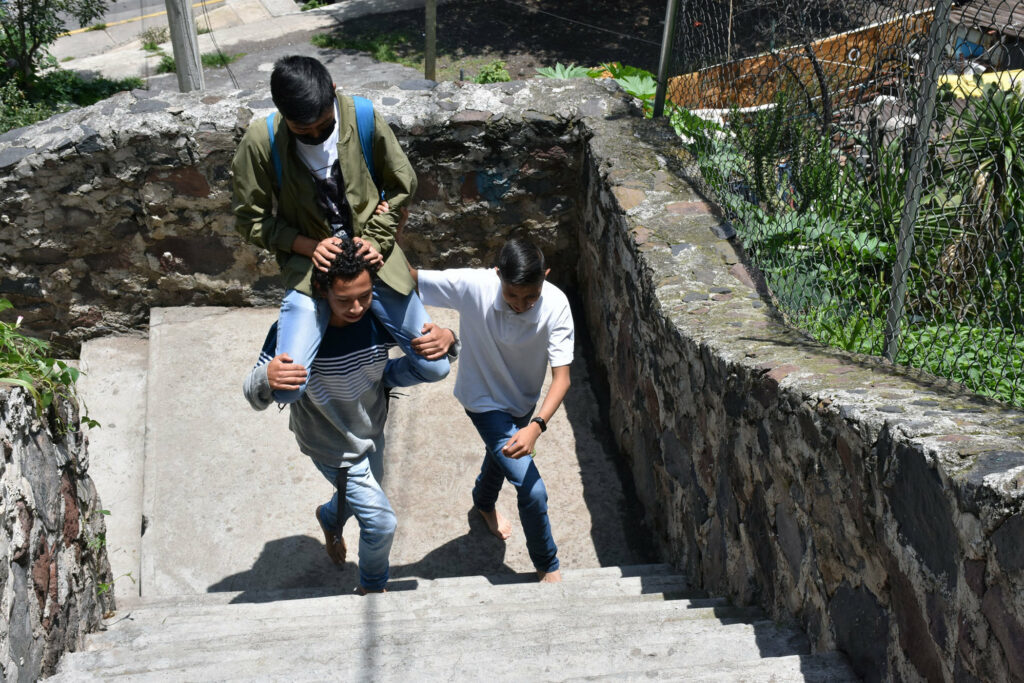
Los Varones prepare physically for months before Holy Week because they’ll carry heavy statues for hours. “We will carry a heavy table, run, do push-ups,” said Octavio Flores. “We will put another person on our back and climb stairs.” Marcos Alberto Serralde González, an aspirante (a new member of the group) was selected to carry a special tray during the six-hour Good Friday procession.“During the training, a tray is loaded with rocks,” he said. “I have been carrying a tray one day a week for a year, carrying it for eight hours. At first, I carried 5 or 6 kg (11 to 13 lbs), now 12 to 18 kg (26 to 40 lbs).”
Because they’ll often forgo shoes during Holy Week, Los Varones will walk barefoot for weeks before to toughen their feet. Spiritually, they’ll attend more masses and bible studies.
During the Cuaresma, the 40 days between Ash Wednesday and Easter Sunday, Los Varones-—who must be unmarried—follow strict rules. “You cannot have contact with your girlfriend,” said Alberto Casas Garcia. “You cannot smoke, drink alcohol, dance or go to fiestas.” They’ll also shave their heads. “It is something symbolic to show we are all equal,” said Ricardo Castro. During Holy Week, Los Varones will be lucky to get two or three hours of sleep a night and there are nights when they’ll get none at all. They’ll also fast from Thursday night until early Saturday morning.
Being a Varon is a huge commitment, but one that young men in the pueblo willingly undertake. “It is an expression of my faith,” said Byron Morales González, another aspirante, “and for me it is to show the traditional things of my pueblo.”
After months of preparation, they’re ready for Holy Week.
Palm Sunday
The night before Palm Sunday, Los Varones carry a statue called Padre Jesús through the pueblo to the home of the síndico, who provides meals for the group and for the reenactment of the Last Supper. Uriel Avelino Avalos was the síndico in 2019. “I waited eight years [to be the síndico],” he said. “I want to do it for the Church, for God.”
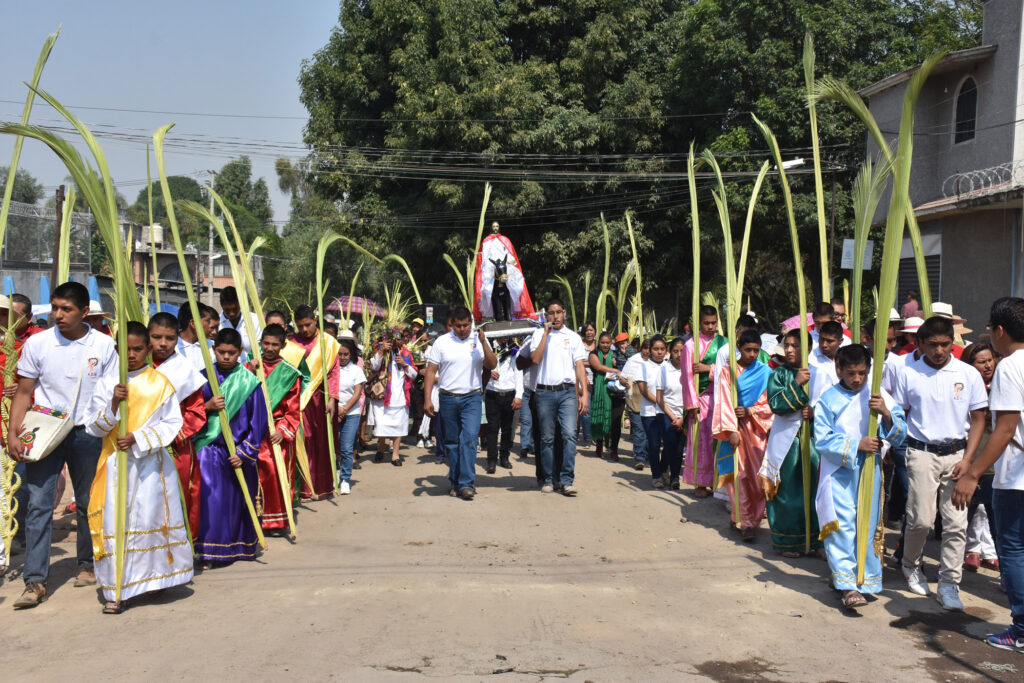
On Palm Sunday, a statue of Jesus astride a donkey is carried through the pueblo, accompanied by 12 boys dressed as Apostles, and several hundred people. After the palms are blessed, the procession returns to the home of the síndico where there’s a meal for over 100 guests.
Wednesday
Altars in the church and in the pueblo’s 22 chapels are decorated with fruit, tied together with heavy string. “The fruit represent the tears of the Virgin, which becomes food for the people,” said Javier Márquez Juárez, who has written about ceremonies in San Gregorio. “Altars with fruit are only found in San Gregorio.” According to Carrasco, only seasonal fruit is used and have symbolic significance. “Apples represent sin, grapes represent wine or the blood of Christ. There is also bread, which represents the body of Christ.”
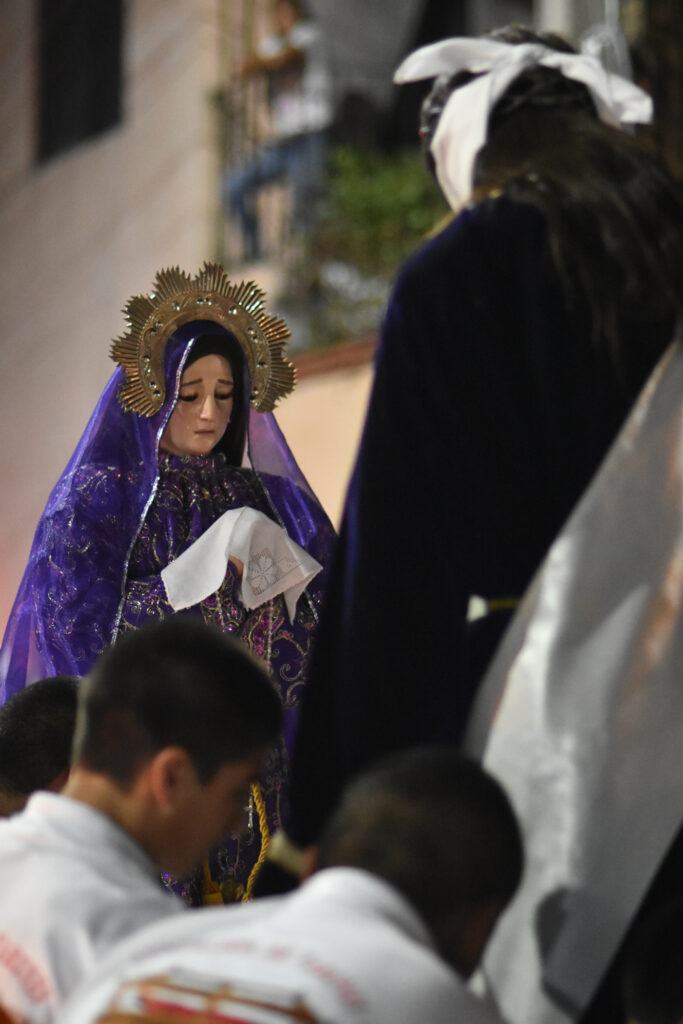
Holy Thursday
Late in the afternoon, people gather in the churchyard for a reenactment of the Last Supper. The 12 boys representing the Apostles sit at long tables under a large tent and are served a traditional Mexican meal of soup, fish, chile relleno and rice, while Los Varones, who have begun their fast and period of silence, stand nearby.
After the meal, the parish priest washes the Apostles’ feet. He is followed by the síndico, who places a crown of thorns on each Apostle’s head and hands them a coin which, Avalos said, “Represents the money that was given to Judas.”
That night, another procession leaves the churchyard. A white cloth covers the eyes of Padre Jesús. “This represents the fact that Jesus is in custody and will soon die,” said Castro. Padre Jesús is carried east while the the Virgen de Doloroso (Virgin of Sorrow) heads west. “In this way, Christ represents the sun and Mary the moon,” said Márquez Juárez. “They will meet at the Calvario Chapel and return together to the church.” There’s no mention of a meeting between Jesus and Mary on Holy Thursday in the Bible but, Carrasco said, “It is more a popular tradition.”
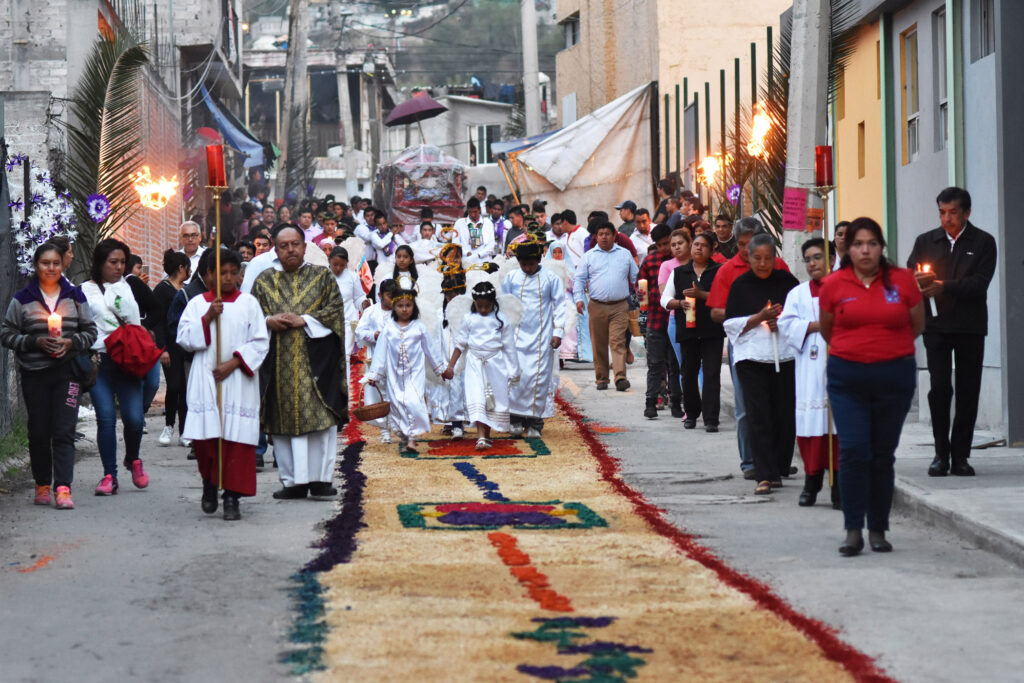
Good Friday
In the morning, there is a viacrusis. Padre Jesús is fitted with a large cross, making 14 stops in the pueblo, accompanied by cantantes—singers who sing mournful songs. At each stop, the procession walks on tapetes de aserrín, beautiful designs made from colored sawdust.
Later that afternoon, Los Varones, dressed in white shirts, signifying purity, and black pants, signifying sorrow and death, exit the church. They walk slowly, barefoot. Flanking them are two young women, representing Mary Magdalene and Veronica. Cantantes sing in an otherwise silent churchyard.
Two Varones climb the ladders to the top of Christ’s cross. “The steps of the ladder hurt your feet,” said Ricardo Enriquez Serralde. “There is the sun. But with devotion, you forget all that. I say a prayer to give us strength to continue.” Very slowly, Jesus’s crown, nails and other items are removed.
The Christ figure is lowered and carried into the church where people file pass, some touching the figure, some kissing it. It is then placed in a glass-enclosed coffin on which red rose petals are spread. That night, the final procession begins.
Six, and sometimes eight, barefoot Varones carry a coffin that weighs 400 pounds on their shoulders. To mitigate the pain, they’ll change sides and other Varones will replace them. The procession takes six hours and makes 14 stops. Finally, at Calvario Chapel, Los Varones are able to drink a glass or two of orange juice.
Saturday
The Fuego Nuevo (New Fire), is lit just before midnight. The síndico lights his candle from it and people light their candles off his. Then, all lights and candles are extinguished and a mass is conducted. When it’s over, candles are re-lit as the church bell rings, a conch shell is sounded and traditional Aztec drums are beaten.
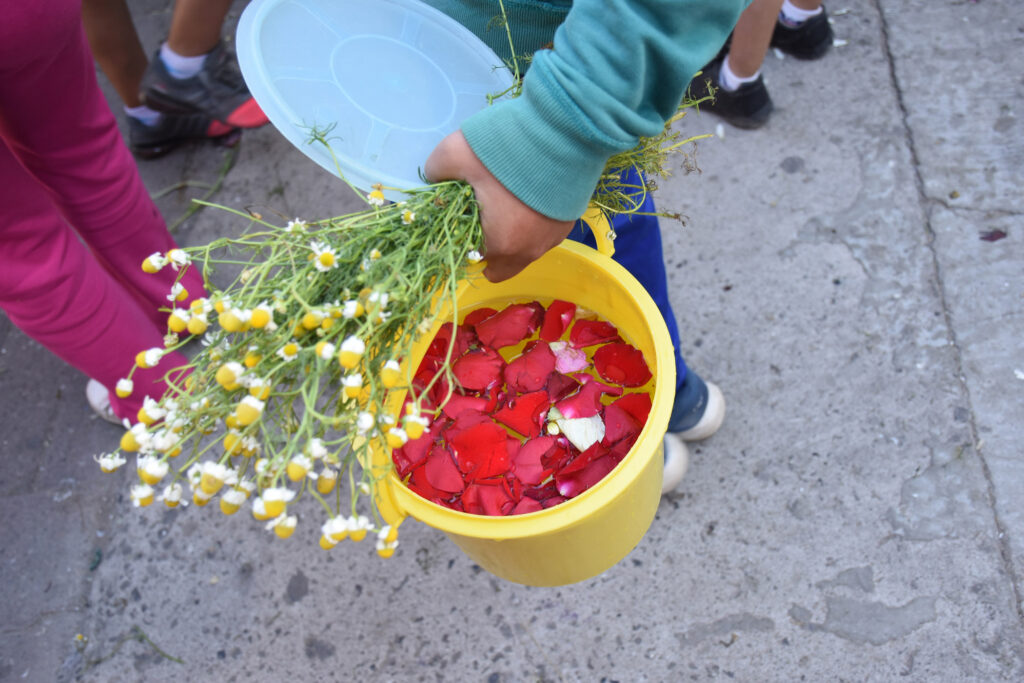
Sunday
On Sunday morning, people line up for holy water, which contains rose petals that had adorned Christ’s coffin, and chamomile. Fruit that was used to decorate altars is distributed. Despite the rigors of Holy Week, Los Varones look rested and happy.
During Holy Week, Los Varones must find a way to continue through the hours-long long processions and the pain. “In those moments when I feel that I cannot continue… I look in front and I see my brothers,” said Castro. “They, too, are suffering but we depend on each other. I look around and see my pueblo, my family… and that motivates me, too. Above all, I look at heaven and see God and ask for strength… because without him it would not be possible… with him at our side, everything is possible.”
Note
Holy Week celebrations in San Gregorio Atlapulco were cancelled in 2020 and 2021. In 2022, masks were required and sanitizing gel was readily available. Some restrictions may also be in place this year.
Related articles on MexConnect
Joseph Sorrentino is a journalist, photographer and playwright. His website is www.sorrentinophotography.com. His book Stinky Island Tales: Some Stories From An Italian-American Childhood (Amazon) is a collection of four stories in English and Spanish with 26 drawings. It’s available as both a paperback and Kindle version.
Published or Updated on: February 1, 2023 by Joseph Sorrentino © 2023

